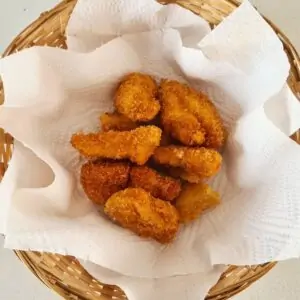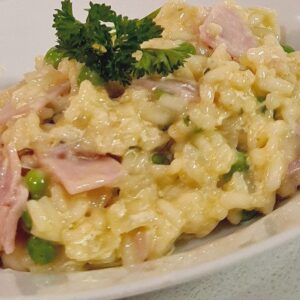Spices are plant parts with aromatic flavourings. They can be in rhizomes, barks, roots, fruits, leaves, and seeds, consumed whole or ground into powder. Unbeknown to many, spices go beyond seasoning food. Some are used to preserve food, while others are used as dyes, perfumes, and medicine. Seasoning food is, however, by far the biggest responsibility for our list of spices …
It’s important to understand the commonly used spices, especially when modern multi-cookers usher in diversity in the kitchen. These cooking appliances let you experiment with hundreds of recipes. Furthermore, with numerous spices on your display, you can try them in different recipes. So get the bragging rights among your friends and family when preparing and seasoning dishes.
According to documented history, spices date back to many centuries ago. For example, Christopher Columbus found Allspice in 1493. New spices have been identified as years rolled, and currently, hundreds of wild and exotic spices are available. This list highlights the most commonly used spices in the UK kitchen.
JUMP TO:
11 Commonly Used Spices In Cooking
1. Pepper
Did you know that pepper is the world’s most traded spice? When you mention pepper, you invariably include salt as well; pepper is a spice, and salt is a mineral used as a seasoning. Peppercorns are harvested from a flowering vine in the family Piperaceae and dried.
I cannot think of one dish that would not taste better with the addition of pepper, and that’s why it’s #1 on our list of spices. The best way to get the most out of pepper is to ensure it is fresh by adding whole pepper to a Pepper Mill.

2. Allspice
Allspice is a unique spice that combines different flavours into one strong, zesty flavour. It combines the flavours of cloves, pepper, nutmeg, and cinnamon. The spice originated in the West Indies in the 14th century. It’s used in savoury dishes and desserts, such as pot roasts, cookies, cakes, relishes, and biscuits.
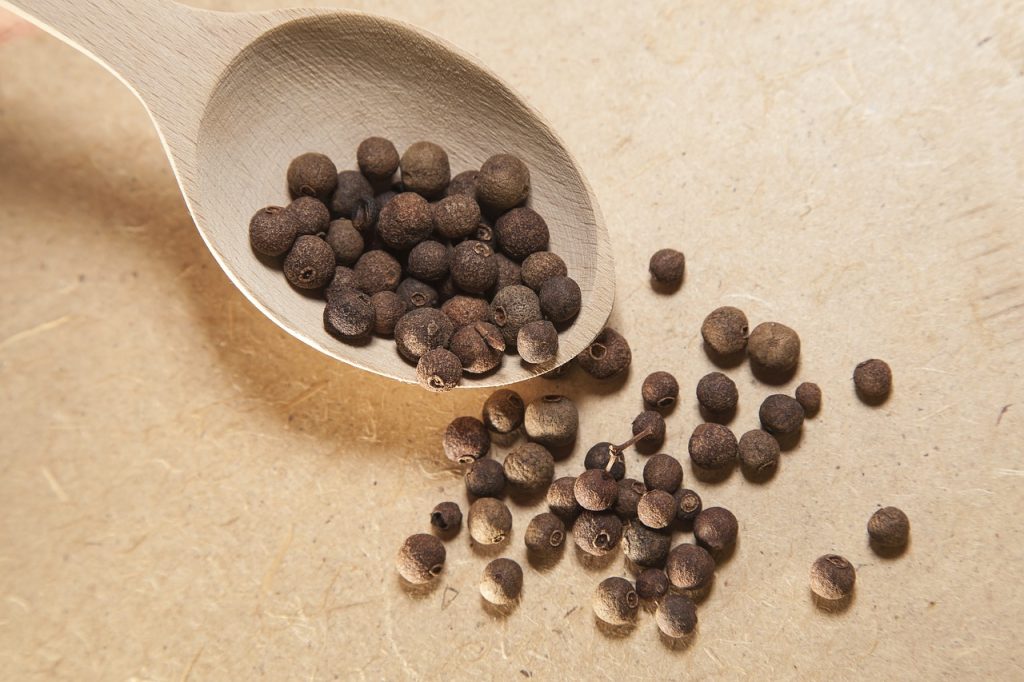
3. Cardamom
Cardamom has common ancestry with ginger. Its origin is southwest India, and it has a sweet, spicy taste. In addition, it contains a mint-lemon flavour. Although it’s somewhat expensive, it contains some medicinal aspects. Cardamom has some cancer-fighting properties and provides instant relief to asthma patients.
There are 2 kinds of cardamom: Mysore, and black cardamom. It’s excellent when used in desserts and sweets. Some common uses include curries, sweet potatoes, jellies, pastries, and cakes.

4. Cloves
Cloves are popular for their aromatic flavour. They grow near the sea, specifically in Madagascar, Zanzibar, and the West Indies. You can detect their strong scent from a substantial distance before you can spot them.
They are used for baking cakes, enhancing curries, beef stew, marinades, and beans. You can also use Cloves in pumpkin pies and alongside fruits such as pears and apples. It’s also popular for its ability to heal toothache, repel moths, and scent the closet.

5. Ginger
Ginger produces fresh, sweet-spicy flavours. It first arrived in Europe in the 15th century. It’s been used since then to flavour bread, puddings, cakes, biscuits, pies, and pickles. It’s a critical ingredient in Indian, Arab and Chinese cultures. Furthermore, it’s perfect for herbal teas. When used in teas, it can be used alone or mixed with other tea leaf varieties.
It’s consumed in many forms, including fresh and dry oil. Once dried, it’s best when grounded into fine powder. Ginger also has some medicinal properties. It relieves sore throat and the common cold, minimizes heartburn, relieves menstrual cramps, and eases motion sickness. In the 18th century, it was believed to have mystic powers, such as expelling droughts.

6. Tamarind
Tamarind is a sour indigenous African fruit with a pod-like structure. Its seeds are coated with fresh pulp. Also, it’s popular in numerous African dishes and Latin American and Asian cuisines. The fruits are used to give unique sourness to sauces and soups.
It also offers relief from fever since it’s a natural laxative. In some regions, its solution is used to ease sore throats.

7. Nutmeg And Mace
Both Nutmeg and mace come from Myristica Fragrans, a tree native to Indonesia. While Nutmeg comes from the seed, mace comes from the fleshy red outer cover that encircles the seeds. Even though Nutmeg comprises aromatic compounds similar to mace, mace is sweeter. Common compounds include pinene, sabinene, myristicin, and methyl eugenol. Other compounds include geraniol, cineole, safrole, and limonene.
Both spices are excellent in savoury dishes and desserts. While they are mostly sprinkled in eggnog, Nutmeg is common in drinks in the Caribbean. Lastly, both spices are very common in Indonesian and Indian dishes. On medical grounds, Nutmeg helps to flush indigestion problems and bad breath. It’s also used as a detox of the kidney and liver.
To get the freshest Nutmeg with the best flavour, buy the whole nutmeg and use a zester-style grater.

8. Cinnamon
Cinnamon is famous across the world, where it’s sold as bark or powder. It has a woody, sweet-spicy flavour. It’s great when added to beverages, desserts, cereals, and entrée. For example, traditional Mexican chocolate drinks are spiced with cinnamon. It is also popular in Middle Eastern cuisine.
The spice helps establish hormonal balance in women, regulate blood sugar levels, and fight infections.
Use the bark for curries, stews, etc and the powder for sweets.

9. Turmeric
Turmeric is synonymous with its orange-yellow tinge. It’s obtained from boiled rhizomes of the turmeric plant. Its flavour is somewhat complex to describe. It has some earthy taste and is slightly bitter. It’s common in flavouring entrées, smoothies, roasted veggies, egg scrambles, rice dishes, and tea.
Turmeric has some pain-killing effects, which make it ideal for arthritis treatment. Furthermore, the spice helps to detox the liver.

10. Paprika
Paprika is a zesty bitter spice with a smoky taste and syrupiness. It’s extracted from dried capsicum annum, and in some cases, you may mix it with various bell peppers or chilli. Differing types of paprika vary in terms of flavour and heat.
Paprika is popular in Mediterranean and Hungarian cultures. It’s perfect with various chicken or egg recipes. In terms of medicinal aspects, it’s rich in antioxidants and antibacterial attributes.
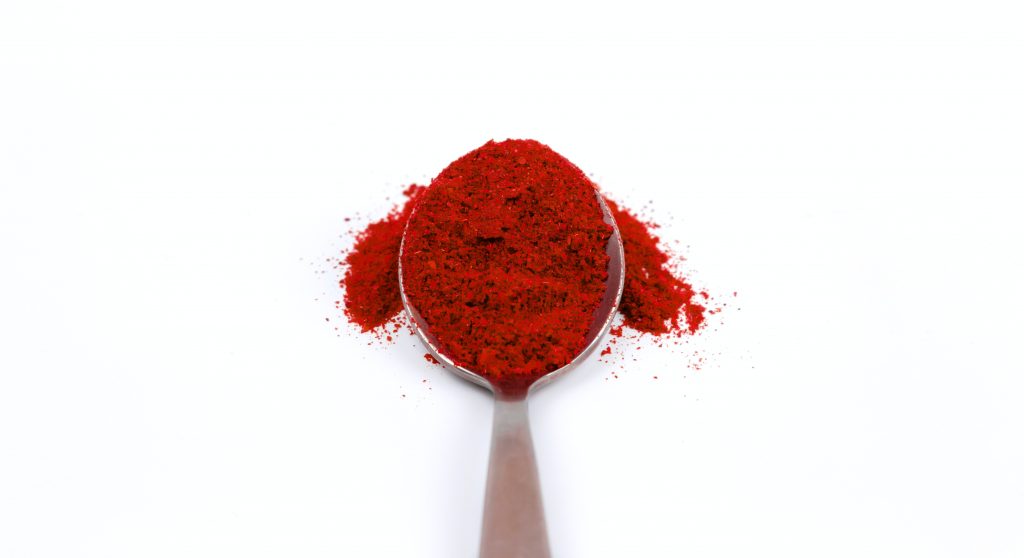
11. Coriander
Coriander is an ancient spice used for its distinctive aroma and medicinal properties. It’s used either as young fresh plants or harvested in the form of seeds. It originated in India but is still popular in the UK and North America. When added to meals, it deepens the taste and enhances the flavour.
Coriander comes in powder or as seeds, depending on what you want to use it for.
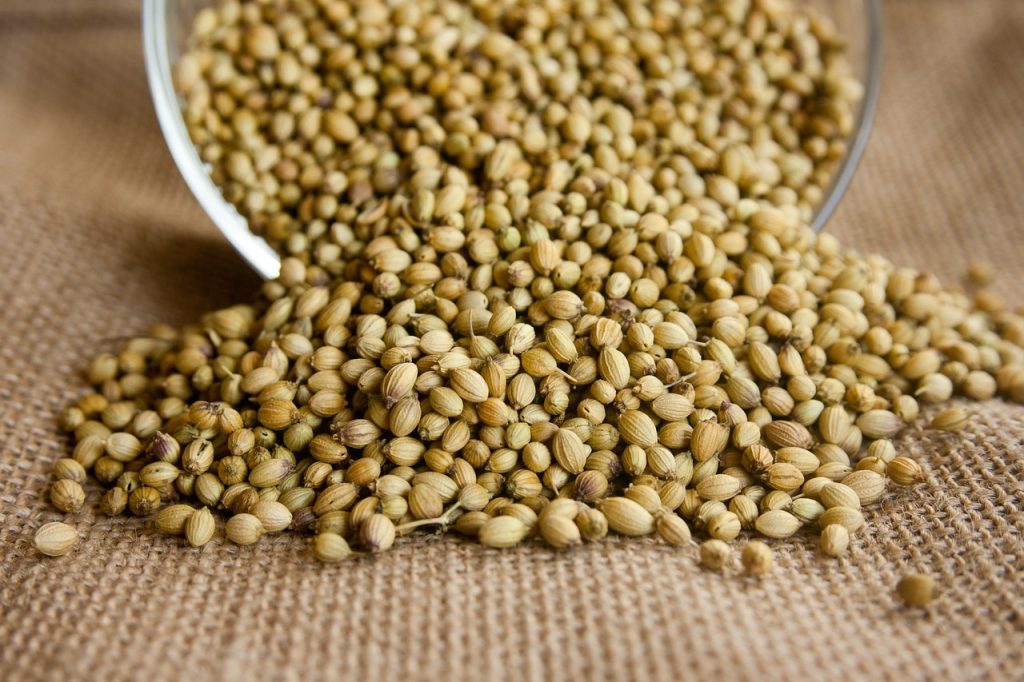
Tips
- Professional cooks recommend you purchase whole spices and grind them yourself.
- Store your spices properly (airtight containers in freezers)
List Of Spices: Summing Up
Since numerous spices are available, you should aim to get the most out of them. Experiment with different spices and experience a new level in your cooking game. There are numerous spice mixes that you can blend to get the most exciting flavours.

